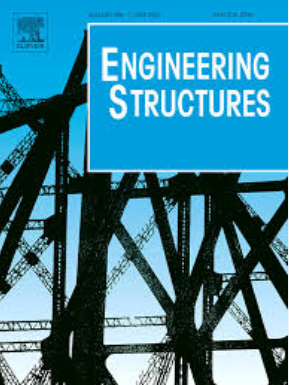Identification of wheel-rail forces on high-speed railways based on physical model and hybrid recursive neural networks
IF 5.6
1区 工程技术
Q1 ENGINEERING, CIVIL
引用次数: 0
Abstract
This paper aims to propose a practical framework for fast inversion and identification of wheel-rail forces of railway based on deep learning, with a view of achieving continuous measurement of the wheel-rail forces of the entire railway line in real time by means of the easily-measure vibration response of the train. For this purpose, a calibrated vehicle-track physical model is used to generate vehicle vibration data and wheel-rail forces, and a data-driven hybrid recursive convolutional and long short-term neural network (CNN-LSTM) and forward rolling prediction method based on recursive mechanisms is developed to facilitate the inversion of wheel-rail forces. Besides, a probabilistic point selection method is applied to compress the massive measured track irregularity data, subsequently, the representative samples are reconstructed to obtain reliable responses from the physical model, and then the variational mode decomposition (VMD) is introduced to extract feature components of the vibration signals for enhancing the capability of the deep learning model. Afterward, the identification performance of the presented framework for the wheel-rail force is examined and discussed by the different working conditions. The results indicate the hybrid recursive VMD-CNN-LSTM holds excellent robustness and generalization ability for the cases of running speeds and track states. Finally, the accuracy and efficiency of the identification framework based- vibration response is further elaborated through the 1 km measured track irregularity data. The correlation between the predicted value and the real wheel-rail forces reaches 0.99, with a time cost of only 4 s, which indicates that the presented framework has promising potential for the online real-time monitoring of wheel-rail force.
基于物理模型和混合递归神经网络的高速铁路轮轨力辨识
本文旨在提出一种基于深度学习的铁路轮轨力快速反演与识别的实用框架,以期通过列车易测的振动响应实现整条铁路线轮轨力的实时连续测量。为此,利用标定后的车辆-轨道物理模型生成车辆振动数据和轮轨力,建立了数据驱动的混合递归卷积和长短期神经网络(CNN-LSTM)和基于递归机制的前向滚动预测方法,实现了轮轨力的反演。此外,采用概率点选择方法对大量实测轨道不平顺性数据进行压缩,重构有代表性的样本以获得可靠的物理模型响应,然后引入变分模态分解(VMD)提取振动信号的特征分量,增强深度学习模型的能力。然后,通过不同工况对所提框架的轮轨力识别性能进行了检验和讨论。结果表明,混合递归VMD-CNN-LSTM对于运行速度和轨道状态具有良好的鲁棒性和泛化能力。最后,通过1 km实测轨道不平度数据,进一步阐述了基于振动响应的识别框架的准确性和效率。预测值与实际轮轨力的相关性达到0.99,时间成本仅为4 s,表明该框架在轮轨力在线实时监测中具有广阔的应用前景。
本文章由计算机程序翻译,如有差异,请以英文原文为准。
求助全文
约1分钟内获得全文
求助全文
来源期刊

Engineering Structures
工程技术-工程:土木
CiteScore
10.20
自引率
14.50%
发文量
1385
审稿时长
67 days
期刊介绍:
Engineering Structures provides a forum for a broad blend of scientific and technical papers to reflect the evolving needs of the structural engineering and structural mechanics communities. Particularly welcome are contributions dealing with applications of structural engineering and mechanics principles in all areas of technology. The journal aspires to a broad and integrated coverage of the effects of dynamic loadings and of the modelling techniques whereby the structural response to these loadings may be computed.
The scope of Engineering Structures encompasses, but is not restricted to, the following areas: infrastructure engineering; earthquake engineering; structure-fluid-soil interaction; wind engineering; fire engineering; blast engineering; structural reliability/stability; life assessment/integrity; structural health monitoring; multi-hazard engineering; structural dynamics; optimization; expert systems; experimental modelling; performance-based design; multiscale analysis; value engineering.
Topics of interest include: tall buildings; innovative structures; environmentally responsive structures; bridges; stadiums; commercial and public buildings; transmission towers; television and telecommunication masts; foldable structures; cooling towers; plates and shells; suspension structures; protective structures; smart structures; nuclear reactors; dams; pressure vessels; pipelines; tunnels.
Engineering Structures also publishes review articles, short communications and discussions, book reviews, and a diary on international events related to any aspect of structural engineering.
 求助内容:
求助内容: 应助结果提醒方式:
应助结果提醒方式:


